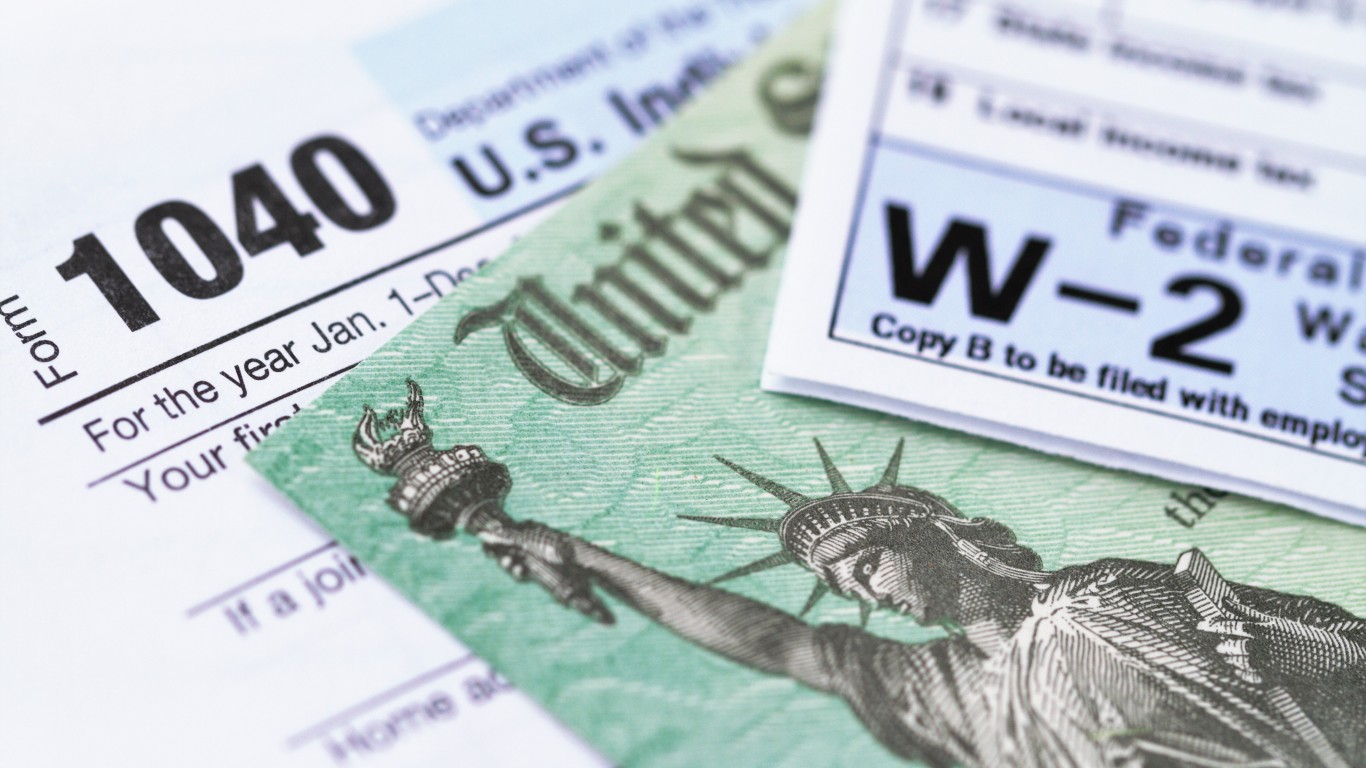Personal Finance
I Used to Think Social Security Was Going Bankrupt, but These 20 Facts Changed My Mind

Published:

Given all the discussions about Social Security occurring almost daily in the news media, it wouldn’t surprise anyone if you thought it was about to go bankrupt. In fact, as politically divisive as Social Security is, there is very little about this giant U.S. expenditure that you wouldn’t be forgiven for thinking.
The Social Security program is America’s most crucial social aid project.
While the Social Security fund isn’t bankrupt, it needs an overhaul.
Social Security lifts millions above the poverty line, directly explaining why it must exist.
4 million Americans are set to retire this year. If you want to join them, click here now to see if you’re behind, or ahead. It only takes a minute. (Sponsor)
The bottom line is that Social Security isn’t going bankrupt in the immediate future, but there is no question that it’s in dire funding straits and needs an overhaul. This is even more true when you consider that Social Security benefits are one of the few issues American voters genuinely agree on as a necessity.

As part of the Social Security program, the Social Security Disability Insurance trust has enough money to remain solvent until 2097. Again, this is enough evidence to quickly argue against any concerns that the entire Social Security program is going bankrupt.

You’ll see this repeated more than a few times on this list, but the reality is that the retirement fund has a shorter timeline of available funds, so Congress has to act sooner rather than later. Still, anyone drawing Social Security disability benefits has no reason to be worried.

At the end of 2023, a combined $2.788 trillion was in the Social Security trust for reserve use. If something with $2.788 trillion in available money is about to go bankrupt, it would be the first time in history.

While the trust fund is pretty clear evidence that the Social Security fund isn’t going bankrupt, a general theme with the many facts here is that the system is in decline. This means more money is being used than replaced at the current trust fund levels.

Yet another reason why it’s questionable why Social Security would go bankrupt is the mere idea that you pay taxes on Social Security itself. While 41 states don’t levy a state income tax, a federal income tax for Social Security exists.

If you receive Social Security benefits, you are contributing back to the system by paying taxes on some of your benefits. At the highest levels, if you are married filing jointly and your combined income is more than $44,000, you are paying taxes on up to 85% of your Social Security benefit. The remaining 15% would go untaxed, and individual tax filers have similar tax levels.

One of the myths that has led to the bankruptcy myths is that former presidential administrations and congressional members previously raided the Social Security Trust Fund. This myth has been around for decades, and as more people hear it, they believe it.

There is very little to the reality that the Social Security Trust Fund was “raided” by former presidential administrations to borrow against. What is true and why this bankruptcy rumor needs to be put to rest is that this trust fund is held in Treasury Bonds, which the federal government can borrow against and repay with interest.

If you think about the program going bankrupt, it’s important to remember why it can’t. First and foremost of these reasons is the 6.2% of payroll tax wages both employers and employers pay separately into the program. The self-employed pay 12.4% on their own.

As much as people complain about taxes, taxes fund things like Medicare, Social Security, and even your fire department. Taxes are why the Social Security program can continue well into the future, although the payroll tax, which the OASI and DI Trust Funds set, can change in the future.

One of the most significant benefits of the Social Security program is that it currently lifts 37.3% of older adults above the poverty line. This represents around 16.3 million adults over 65 no longer living in poverty because of the Social Security program.

When you hear that the Social Security program is going to go bankrupt, it’s because of reasons like the poverty line that it simply cannot. So long as taxes are paid into the program, it won’t, but this poverty number clearly indicates that if the program did go belly up, it would be devastating for millions of people who rely on it for social aid.

It’s okay if most people believe that military spending is the largest single program funded by the federal government. It’s often the most talked about, so people hear enough to think this is a reality. The challenge is that military spending isn’t even among the top two government expenditures.

In 2024, the federal government spent over $6.9 trillion, of which $4.9 trillion was financed by federal revenues (think taxes). Of this budget, 21%, or approximately $1.5 trillion, was spent on Social Security, providing an average of $1,922 to 68.3 million beneficiaries, children, spouses, and ex-spouses.

If you think Social Security will go bankrupt, you are ignoring that in March 2024, there were more than 67.5 million Social Security beneficiaries in the United States. This means that one out of every five Americans received some Social Security benefit.

The biggest takeaway from this number is that Social Security, as a system, is too big to fail. With so many millions of Americans relying on Social Security and or disability benefits, the system cannot go bankrupt without moving millions of people below the poverty line.

One fact is that the number of workers contributing to the Social Security pot for benefit payments is shrinking. As a result of baby boomers leaving the workforce, the 5.1 workers contributing to every individual payment in 1960 is now closer to 2.8 workers as of 2023. By 2035, this should be down to 2.1 workers for every beneficiary.

The biggest concern with this ratio is that an aging population and lower birth rates contribute to less money being poured into the Social Security pot than ever. For this reason, the system is straining, which policymakers need to address sooner rather than later, potentially by increasing Social Security taxes or the age of retirement.

If you have been watching the news, the prevailing theory is that by 2034 or 2035, Social Security will go bankrupt by this point, depending on what and whom you are listening to. Some indicators say it won’t go bankrupt but will be so depleted that benefits cannot be paid.

The reality of this fact is that Social Security can and will not go bankrupt if people are still working and paying taxes. The 2035 number you see is more focused on the year that 100% of Social Security benefit payments cannot be made. During this time, between 77% and 83% of scheduled benefits will be paid, which reduces benefits for the millions who count on Social Security.
Retirement can be daunting, but it doesn’t need to be.
Imagine having an expert in your corner to help you with your financial goals. Someone to help you determine if you’re ahead, behind, or right on track. With SmartAsset, that’s not just a dream—it’s reality. This free tool connects you with pre-screened financial advisors who work in your best interests. It’s quick, it’s easy, so take the leap today and start planning smarter!
Don’t waste another minute; get started right here and help your retirement dreams become a retirement reality.
Thank you for reading! Have some feedback for us?
Contact the 24/7 Wall St. editorial team.